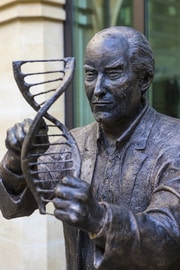5 Real-World Applications of Predictive Analytics
Predictive analytics is a branch of advanced analytics. It is the use of historical data to make predictions about future activities, trends and events. Businesses hire professional predictive analytics that use data mining techniques, machine learning and historical data to find a pattern in the available data.
That pattern can then be used to forecast future opportunities and avoid potential risks.
When you start a business, it doesn’t take off the next day. Microsoft and Apple didn’t become billion-dollar companies overnight. It took years for them to become what they are today.
So, what was their secret? What does it take to successfully grow a business or be a successful entrepreneur?
Well, you need to know your business before you grow it.
“Without big data analytics, companies are blind and deaf, wandering out onto the web like deer on a freeway.” Geoffrey Moore.
You need to find answers to questions like: What do my customers want? What is making them happy and what are they willing to spend their bucks on? How frequently are they purchasing? Where are you losing money and what is not working for your company?
You need to work hard and smart at the same time.
Collecting answers to all those questions means gathering a bulk of information. That information is your data and using that data for your benefit is the goal.
That’s where predictive analytics help. It helps you outline a relevant pattern in the collected data and then come up with building models that predict what will most likely happen in the future.
Listed below are few examples of predictive analytics put to the test and how it helps in generating better outcomes.
4 Real World Applications of Predictive Analytics
1. Banking and Finance:
The financial industry always has huge amount of data and money at stake. Predictive analytics helps it reduce fraud, measure credit risks and hence retain important customers. By analyzing past data and trends, it gets easier for developers to model more accurate fraud prevention strategies. It also helps in forecasting sales, revenues and expenses to get a better idea of what the future may bring and make decisions accordingly.
2. Health Care
The healthcare industry is a big implementer of predictive analytics as it helps them save money and improve practices. It helps in analyzing global disease statistics, drug interactions and patients’ diagnostic history to come up with the most advanced care. Furthermore, a clinic can apply predictive analytics on their appointments to identify people who don’t show up or cancel last minute, in order to save time and resources.
Most importantly, health insurance industry is using predictive analytics to detect claims fraud. It helps in detecting and managing the care of chronically ill patients.
3. Marketing
Customers have more choices today than they had before and so they are not limited to any store for their purchases. Hence there is a lot of competition among businesses. Customers attract to a business because of its marketing. Predictive analytics can be applied to marketing, using data an analysis to forecast sale trends at different times of the year and then design campaigns accordingly. It helps in understanding consumer behaviors and what might work best in the future.
Moreover, it also helps marketers identify customers that are most valuable for their company and plan which set of information should be displayed to attract such consumers. It also helps in prioritizing where to focus their ad money based on the value the customers present.
4. Education
Predictive analytics in education studies data to generate better outcomes for students by identifying at-risk individuals, personalizing learning experiences, and optimizing resources. By analyzing patterns in student performance, attendance, and behavior, educators can predict which students are likely to struggle and apply support immediately. Educators who learn analytics can also see benefits for young learners as well. Predictive models help tailor instruction to individual learning styles and paces, enhancing student engagement and achievement.
Schools can also use predictive analytics to allocate resources more efficiently, ensuring that students and teachers have the tools they need for success. Overall, these data-driven insights foster a proactive approach to education, promoting higher retention rates and improved academic performance.
5. Retail
Predictive analytics helps retailers by giving them full control over their business. How exactly? Well, firstly it helps you forecast everything, from sales to potential product shortage. It helps ensure that you always have enough stock for your customers based on your previous sale history or loyalty to brands. Having a track of which products were your best sellers and which didn’t do so well, help in coming up with better plans for the future.
Furthermore, predictive analytics also prepares you for change. If we take Covid-19 as an example, businesses knew that the minute cases will rise again, lockdown will be imposed. Due to their previous data history, they were aware of the losses that may come with another lockdown, so predictive analytics helped them protect their business.
Conclusion
Predictive analytics is bringing a change in how companies used to operate. With time, businesses are slowly recognizing how much benefit predictive analytics can bring them. The market value of predictive analytics software was at 5.29 billion U.S. Dollars in 2020 and it is predicted to grow up to 41.52 billion U.S. Dollars till 2028. Predictive analytics gives companies insights which need to be considered to make safe and successful decisions for the future of the company.








